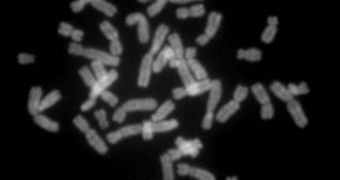As more and more work was conducted on the human cell and its components, researchers noticed some time ago that chromosomes tended to appear in various parts of the cells during specific stages of cell division. This naturally led researchers to believe that the structures were moving about, but no one was able to determine exactly how fast this happened until now. Scientists from the Brunel University Institute for Cancer Genetics and Pharmacogenomics were surprised to find out that the chromosomes actually moved very fast inside the cell nucleus, much more so than any predictions made on this issue, ScienceDaily reports.
In the research paper accompanying the findings, published in the latest issue of the respected medical journal Genome Biology, the team reports that chromosomes move inside the cellular nucleus when they exit the proliferative stage, and enter quiescence. At this time, they do so with great speed, a fact that was completely unexpected. When moving from the non-random distribution that they have during quiescence to the proliferative stage of cell growth, the cellular structures require about 36 hours to reach their destination. However, when going the other way around, the team determined, they took around 15 minutes. The difference is staggering, the science team believes. The investigation was led by BU expert Joanna Bridger.
“Excitingly, we found that chromosome repositioning was very rapid and complete within 15 minutes,” she reveals. The new discovery was made using a technology known as 2D-FISH imaging, which enabled the group to map the exact position of the chromosomes right before the study started. With this piece of information established, the team set out to investigate the propulsion mechanism behind the structures' ability to move so fast. Researchers hypothesized that actin and myosin motors, which are also common in other types of moving cellular components, were responsible for propelling chromosomes as well, and decided to put the idea to the test.
They developed a method of inhibiting the polymerization of these compounds, which means that neither actin nor myosin could contract. Without contractions, they cannot provide propulsion, and this was made obvious in the fact that the chromosomes failed to move to quiescence after exiting the proliferative stage. “These data imply that rapid chromosome movement as they respond to a removal of growth factors is due to an energy-driven process involving a nuclear actin: myosin motor function,” Bridger explains.

 14 DAY TRIAL //
14 DAY TRIAL //